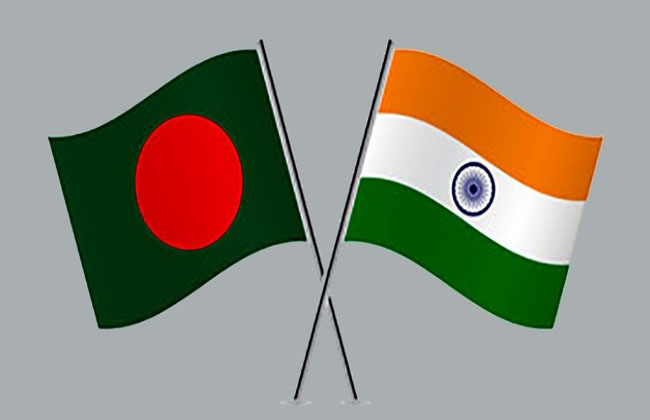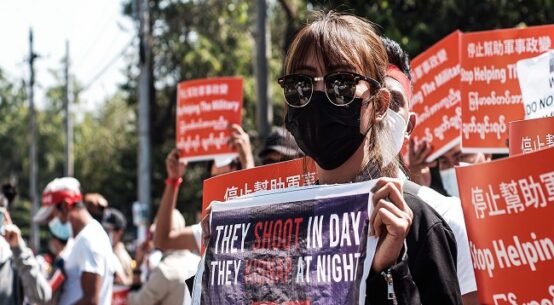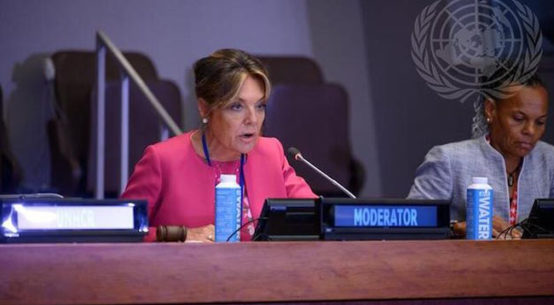
The idea of a ‘win-win’ partnership between India and Bangladesh is driving the economic relationship them. The Comprehensive Economic Partnership Agreement between India of Bangladesh will be a Comprehensive Economic Framework and an instrument to optimize the advantages of their strategic geographical landscape.
This agreement has immense growth potential but is prone to equally great pitfalls if not utilized proactively. India had earlier signed CEPA with three countries namely UAE, South Korea, and Japan. Bangladesh will be the fourth country to be signed.On its part, Bangladesh has agreed to start negotiations on CEPA for the first time. Keeping the global financial crisis ahead in mind, both countries must reap most of the benefits of CEPA. Thus, it will strengthen the Indo-Bangladesh bilateral relationship.
Trade Facilitation Measures
The economies of India-Bangladesh need an impetus to pursue this through a series of trade facilitation measures including simplifying the movement of people and goods between both countries; greater use of one another’s seaports to explore the possibility of the Comprehensive Economic Partnership Agreement. India and Bangladesh need to undertake trade facilitation measures that will greatly reduce current physical and nonphysical barriers to transportation and transit to boost two-way trade. It can be done by two means. Firstly, through both visible infrastructural development(i.e. connectivity infrastructure; railroad and waterways, land ports, water ports) andthen throughinvisible infrastructural development (such as reformed policies, procedures, and regulations). These areas need special attention from policymakers and researchers in both Bangladesh and India.
Visible Infrastructure, Increasing Connectivity
Reaping the most out of this agreement will not be easy for Bangladesh. In most of the bilateral relations between Bangladesh and India trade and connectivity issues have received the utmost priority. But the deficiency in the infrastructure of connectivity remains. The Connectivity infrastructure between the two countries includes rail, road, and waterways. According to a study by World Bank, “Improving transport connectivity between the two countries could increase exports even further, yielding a 297 percent increase in Bangladesh’s exports to India and a 172 percent increase in India’s exports to Bangladesh”. With full transport integration without the border barriers, it is estimated that “income would increase by 16.6 percent in Bangladesh and 7.6 percent in India”, according to the same study. This illustrates why connectivity is being prioritized by the two governments for bilateral trade.
Boosting Trade through Land Ports
Infrastructural Development in the land ports of Bangladesh also needs immediate attention. Though the Petrapole land port on the Indian side has been modernized, Benapole requires attention. Under the World Bank Bangladesh Regional Connectivity Project, infrastructure in three land ports of Bangladesh—Ramgarh, Sheola, and Benapole—is being developed and Bhomra, Burimari, and Bholaganj are under consideration.
Though Benapole remains the largest trading point between India and Bangladesh, congestion remains a major concern. It is important to have a four-lane road that connects Benapole. Construction of a second cargo gate to some extent will help in faster clearance of cargo. Comparatively, Agartala–Akhaura has better facilities as it is connected to NH 8 through an arterial road. It is the second largest land port. Transit trade is greatly challenged by highway infrastructure in each of the countries. According to the World Bank, transport vehicles within Bangladesh have “an average speed of 19 kilometers an hour along main corridors”, indicating that the roads are congested. This is very much evident from the fact that the handling capacity of both Bangladesh and India across the Benapole–Petrapole border is asymmetrical. Parking mafias that operate in the border area benefit from the delay in clearing the customs for loading and unloading of cargo. Moreover, not just Benapole able to clear a few cargo trucks but Bangladesh also prioritizes clearance of containerized cargo of cotton fabric and truck chassis.
Invisible Infrastructure:
Both countries should emphasize administrative reform, governance, and security. Customs is an intrinsic element of India-Bangladesh’s cross-border movement of goods and services and yields significant influence on bilateral trade. Not only that, customs perform other important functions such as revenue collection and protection against dangerous goods. The time taken for clearance of goods has an impact on the competitiveness of the products. So, India-Bangladesh should bring administrative reforms on both sides of India and Bangladesh.
More areas that need reform are reducing the high transaction cost of export and easing the complexity of cross-border trading procedures. Complex requirements in cross-border trade increase the possibility of corruption. For example, at the key border-crossing point between India and Bangladesh, as many as 1,500 trucks queue on both sides of the border with waiting times varying between one and five days to complete documentation requirements. Expediting customs clearance procedures reduces the discretionary power of customs officials, thus reducing the scope for corruption. Efficient, friendly, and corruption-free customs can help boost trade and investment.
The trade dispute with India is another issue Bangladesh needs. Previously Dhaka has failed to move ahead to resolve the bilateral trade disputes by applying trade-remedial measures under the umbrella of the World Trade Organization (WTO). Various non-tariff measures (NTMs) as well as non-tariff barriers (NTBs) regularly imposed by India also need serious attention. Bangladesh also imposes various NTBs. Dealing with NTMs and NTBs requires a rigorous approach as CEPA doesn’t have to clear the threshold of WTO.
For getting the maximum benefit of CEPA, trade liberalization is a necessary condition, but not a sufficient one. To achieve any substantial progress in bilateral and regional trade between India and Bangladesh, the utmost priority should be given to developing infrastructure facilities. Added to this, complementary policy reform in the transport sector, accompanied by improved procedural and operational efficiency, is essential to support trade liberalization Under CEPA. In turn, these policy reforms will facilitate bilateral trading systems and economic cooperation under CEPA.
Jubeda Chowdhury is a freelance writer, with interest in international politics, refugee rights, environmental issues, and women’s rights. She completed her honors and Master’s degree in the International Relations Department of the University of Dhaka.


